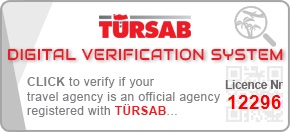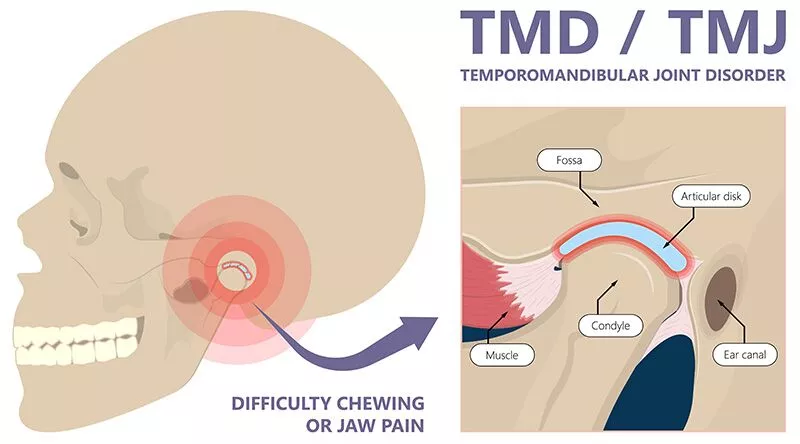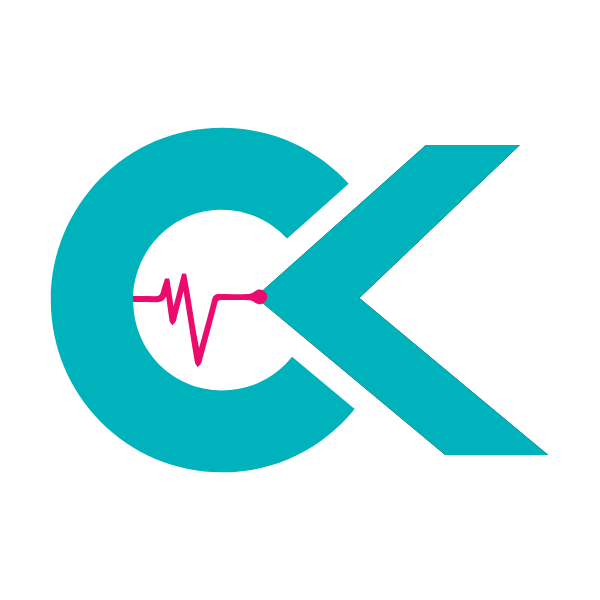Temporomandibular Joint (TMJ) disorder, often referred to as TMD, represents a complex and frequently debilitating condition affecting the jaw joints and the muscles controlling jaw movement. This pervasive issue can manifest in a myriad of symptoms, ranging from persistent jaw pain and clicking sounds to headaches and difficulty in chewing, significantly impacting an individual’s quality of life. For those seeking comprehensive and effective solutions, understanding the landscape of tmj disorder treatment is paramount. This guide provides an authoritative overview of the diagnostic processes, conservative therapies, and advanced interventions available, empowering patients to make informed decisions about their care.
Table of Contents
Understanding TMJ Disorder: Symptoms and Causes
What is Temporomandibular Joint Disorder?
The temporomandibular joints are two intricate joints connecting your jawbone to your skull, located directly in front of each ear. These joints, along with surrounding muscles, ligaments, and discs, facilitate essential functions such as speaking, chewing, and yawning. When these components cease to function harmoniously, a temporomandibular joint dysfunction arises, leading to a spectrum of symptoms and discomfort often categorized as TMD. It is crucial to distinguish between TMJ (the joint itself) and TMD (the disorder affecting it).
Common Symptoms of TMD
Recognizing the diverse range of TMJ symptoms is the first step towards seeking appropriate care. Patients commonly report:
- Pain or tenderness in the jaw, face, ear, neck, or shoulders.
- Difficulty or discomfort when chewing, yawning, or speaking.
- Clicking, popping, or grating sounds when opening or closing the mouth, sometimes accompanied by pain.
- Limited jaw movement or a sensation of the jaw locking in an open or closed position.
- Headaches, including migraines, and earaches, ringing in the ears (tinnitus), or dizziness.
- Facial swelling or a sensation of fatigue in the facial muscles.
- Changes in the way the upper and lower teeth fit together (malocclusion).
Underlying Causes of TMJ Dysfunction
The etiology of TMD is often multifactorial, making accurate diagnosis a critical component of successful tmj disorder treatment. While a single definitive cause may not always be identified, several factors are commonly implicated:
- Bruxism: Chronic teeth grinding or clenching, particularly during sleep, places immense pressure on the TMJ and surrounding muscles.
- Trauma: A direct blow to the jaw, head, or neck, or a whiplash injury, can damage the joint.
- Arthritis: Various forms of arthritis, such as osteoarthritis or rheumatoid arthritis, can affect the temporomandibular joint, leading to inflammation and deterioration.
- Stress: Psychological stress can exacerbate clenching habits and muscle tension in the jaw.
- Malocclusion: An improper bite or misaligned teeth can put undue strain on the jaw joints. For those with dental alignment issues, understanding options like Invisalign for Adults in Turkey: Navigating Treatment Costs may be relevant, as proper dental alignment can often alleviate TMJ stress.
- Joint disc displacement: The small, soft disc that cushions the joint can become displaced or eroded, leading to friction and pain.
- Connective tissue diseases: Conditions that affect the body’s connective tissues can also impact joint function.
Diagnostic Approaches for Accurate TMJ Disorder Treatment
A precise diagnosis is the cornerstone of effective tmj disorder treatment. A thorough evaluation by a healthcare professional, often a dentist or an orofacial pain specialist, is essential to identify the underlying cause and severity of the condition.
Clinical Examination and History
The diagnostic process typically begins with a detailed medical history, where the patient describes their symptoms, their onset, and any precipitating factors. The clinician will perform a physical examination, which includes:
- Palpation: Gently feeling the jaw joints and muscles for tenderness, swelling, or spasms.
- Auscultation: Listening for clicking, popping, or grating sounds during jaw movement using a stethoscope.
- Range of Motion: Assessing the jaw’s ability to open, close, and move side-to-side, noting any limitations or deviations.
- Bite Assessment: Examining the alignment of teeth and how the upper and lower jaws meet.
Imaging Techniques
When the clinical examination suggests specific structural issues or persistent symptoms, imaging studies may be ordered:
- X-rays: Provide an overview of the jawbones and joints, helping to rule out fractures or severe arthritic changes.
- MRI (Magnetic Resonance Imaging): Offers detailed images of soft tissues, including the TMJ disc, muscles, and ligaments, which is crucial for assessing disc displacement and inflammation.
- CT Scans (Computed Tomography): Provides a more detailed view of the bone structure of the joint, useful in cases of severe degeneration or trauma.
- Arthrography: Involves injecting a contrast dye into the joint space before imaging to visualize disc movement and joint function more clearly.
Conservative Management: First-Line TMJ Disorder Treatment
For the majority of patients, conservative, non-invasive approaches are the initial and often most successful course of tmj disorder treatment. These methods aim to reduce pain, restore normal jaw function, and prevent further damage.
Lifestyle Adjustments and Home Care
Simple changes in daily habits can significantly alleviate TMJ symptoms:
- Soft Food Diet: Avoiding hard, chewy, or sticky foods minimizes strain on the jaw joints.
- Avoid Extreme Jaw Movements: Limiting wide yawns, singing, or chewing gum.
- Heat and Cold Therapy: Applying moist heat or ice packs to the jaw and temples can soothe muscle pain.
- Gentle Jaw Exercises: Performing specific exercises recommended by a therapist to improve jaw flexibility and strengthen muscles.
Pain Management and Medications
Pharmacological interventions are often used to manage pain and inflammation:
- Over-the-counter pain relievers: Nonsteroidal anti-inflammatory drugs (NSAIDs) like ibuprofen or naproxen can reduce pain and swelling.
- Prescription medications: Muscle relaxants, tricyclic antidepressants (at low doses for pain and sleep), or stronger pain relievers may be prescribed for severe cases.
- Botulinum toxin (Botox) injections: Can be used to relax hyperactive jaw muscles, offering significant jaw pain relief for some patients.
Dental Appliances (Splints and Mouthguards)
Custom-made oral appliances are a common and effective form of TMD management:
- Stabilization splints (occlusal splints): These acrylic guards fit over the upper or lower teeth, creating an even bite surface. They reduce clenching and grinding, protect teeth, and help relax jaw muscles.
- Repositioning splints: Less commonly used, these appliances attempt to temporarily reposition the jaw. Their long-term efficacy is debated, and they are typically reserved for specific, short-term applications.
Physical Therapy and Exercises
Physical therapy plays a vital role in restoring proper jaw mechanics. A physical therapist specializing in orofacial pain can guide patients through:
- Stretching and strengthening exercises: To improve jaw mobility and muscle function.
- Posture training: Addressing neck and shoulder posture, which can impact jaw alignment.
- Manual therapy: Techniques to reduce muscle tension and improve joint mobility.
- Ultrasound and TENS (Transcutaneous Electrical Nerve Stimulation): Adjunctive therapies to reduce pain and inflammation.
Stress Management and Biofeedback
Given the strong link between stress and bruxism, stress reduction techniques are integral to a holistic tmj disorder treatment plan. Biofeedback can teach patients to consciously control muscle tension, while relaxation techniques like meditation, yoga, and deep breathing can reduce overall stress levels.
Advanced and Interventional TMJ Disorder Treatment Options
When conservative methods prove insufficient, more advanced interventional or surgical approaches may be considered. These are typically reserved for cases with structural damage or persistent, severe symptoms.
Injections for Pain Relief
Beyond Botox, other injections can be used to target specific areas of pain:
- Corticosteroid injections: Administered directly into the joint to reduce inflammation and pain.
- Trigger point injections: Involve injecting local anesthetic, sometimes with a corticosteroid, into painful muscle knots.
Minimally Invasive Procedures
- Arthrocentesis: A procedure involving the insertion of two small needles into the joint to lavage (wash out) the joint space with sterile fluid. This helps remove inflammatory byproducts and can sometimes relieve pressure and improve disc mobility.
- Arthroscopy: A minimally invasive surgical procedure where a tiny incision is made, and a small instrument (arthroscope) with a camera is inserted into the joint. This allows the surgeon to visualize the joint, remove inflammatory tissue, correct disc alignment, or flush the joint. It is a less invasive alternative to open-joint surgery.
Surgical Interventions
Open-joint surgery is considered a last resort for tmj disorder treatment and is typically recommended for patients with severe structural problems that have not responded to other therapies. Procedures may include:
- Disc repositioning or repair: To correct a displaced or damaged disc.
- Joint replacement: In very severe cases of joint degeneration, the temporomandibular joint may be replaced, either partially or totally, with a prosthetic implant.
Research published in journals such as the *Journal of Oral & Maxillofacial Surgery* often highlights that conservative temporomandibular joint dysfunction treatments, including physical therapy, occlusal splints, and pharmacological interventions, are effective as initial approaches for most cases. Surgical interventions are generally reserved for a select group of patients with severe, unresponsive conditions, emphasizing a step-wise management strategy, making informed patient selection for surgery critical. This underscores the importance of exhausting non-surgical options before considering more invasive procedures.
The Comprehensive Approach of CK Health Turkey for International Patients
For international patients, particularly those from the United Kingdom, seeking high-quality and cost-effective medical care, CK Health Turkey stands as a premier destination for tmj disorder treatment. Our commitment to excellence is reflected in our state-of-the-art facilities, multidisciplinary team of specialists, and patient-centric approach. We understand the unique needs of international patients, offering comprehensive support from initial consultation through to post-treatment care.
At CK Health Turkey, patients benefit from access to experienced oral and maxillofacial surgeons, dentists, physical therapists, and pain management specialists, all collaborating to develop personalized treatment plans. Our approach integrates the latest diagnostic technologies with evidence-based therapeutic strategies, ensuring optimal outcomes for conditions ranging from bruxism treatment to complex surgical interventions. Our wide array of treatments ensures that patients receive holistic care. While TMJ is a specialized area, our general commitment to medical excellence spans various fields, including Eye Treatments in Turkey, showcasing our broad expertise and dedication to advanced patient care across multiple disciplines.
Choosing to undergo tmj disorder treatment in Turkey provides not only access to world-class medical expertise but also significant financial advantages compared to costs in the United Kingdom, without compromising on quality or safety. We pride ourselves on transparent pricing and delivering exceptional value.
Price Comparison: TMJ Disorder Treatment (Estimated in GBP)
| Service/Item | Turkey Price | United Kingdom Price |
|---|---|---|
| Dental Splint/Occlusal Guard | £300 – £600 | £400 – £1,200 |
| Physical Therapy (per session) | £30 – £60 | £60 – £120 |
| Botox for TMJ (per session) | £350 – £700 | £450 – £900 |
| TMJ Arthroscopy | £2,500 – £4,500 | £5,000 – £10,000 |
| Open Joint Surgery (complex) | £6,000 – £12,000 | £15,000 – £25,000 |
These figures are approximate and can vary based on the specific clinic, complexity of the case, and included services. However, they illustrate the considerable cost-effectiveness of seeking treatment in Turkey.
Comparison of TMJ Treatment Approaches
| Factor | Conservative Therapies | Minimally Invasive Procedures | Surgical Options |
|---|---|---|---|
| Invasiveness | Low | Moderate | High |
| Recovery Time | Minimal to Weeks | Days to Weeks | Weeks to Months |
| Primary Goal | Pain relief, muscle relaxation, habit modification | Reduce inflammation, improve joint mechanics | Repair/replace damaged joint structures |
| Typical Candidates | Most TMD cases, early stages, mild-moderate symptoms | Persistent pain, disc displacement, limited mobility | Severe structural damage, failed conservative/minimally invasive |
| Cost (Relative) | Low to Moderate | Moderate to High | High |
We encourage patients considering tmj disorder treatment to explore their options with CK Health Turkey. Our team is ready to provide detailed information, answer your questions, and guide you through the process of receiving world-class medical care. Get in touch with us for a personalized consultation or visit our website to learn more about how we can help you achieve lasting jaw pain relief and improved quality of life.
FAQs
What is the difference between TMJ and TMD?
TMJ refers to the temporomandibular joint itself, which connects your jawbone to your skull. TMD, or Temporomandibular Joint Disorder, is the condition that affects this joint and the surrounding muscles, causing pain and dysfunction.
How long does TMJ disorder treatment typically take?
The duration of TMJ disorder treatment varies widely depending on the severity of the condition and the chosen approach. Conservative treatments might show improvement within weeks or months, while surgical recovery can take several months.
Can TMJ disorder treatment cure my condition permanently?
Many patients experience significant and lasting relief with appropriate treatment. While a complete cure depends on the underlying cause, consistent care and professional management can prevent recurrence and maintain long-term jaw health.
What are the most effective TMJ disorder treatment options?
Effective TMJ disorder treatments include physical therapy, oral splints or mouthguards, stress management techniques, and medication for pain relief. In severe cases, minimally invasive or surgical procedures may be recommended by a specialist.
Can TMJ disorder treatment help with headaches and ear pain?
Yes, TMJ disorder treatment often reduces related symptoms such as chronic headaches, earaches, and facial pain. By addressing the underlying jaw dysfunction, many patients notice improved comfort and fewer tension-related issues.
Is TMJ disorder treatment painful?
Most TMJ treatments are non-invasive and designed to relieve pain rather than cause it. You might experience mild discomfort during adjustments or therapy sessions, but this typically subsides as the jaw begins to heal and realign.
How can I prevent TMJ disorder from returning after treatment?
Maintaining good posture, avoiding teeth clenching, managing stress, and following your dentist’s aftercare instructions can significantly reduce the risk of TMJ disorder recurrence. Regular check-ups also help ensure lasting results.
What happens if TMJ disorder is left untreated?
Untreated TMJ disorder can lead to chronic jaw pain, limited movement, headaches, and even long-term joint damage. Seeking early professional TMJ disorder treatment helps prevent complications and improves overall oral health.



